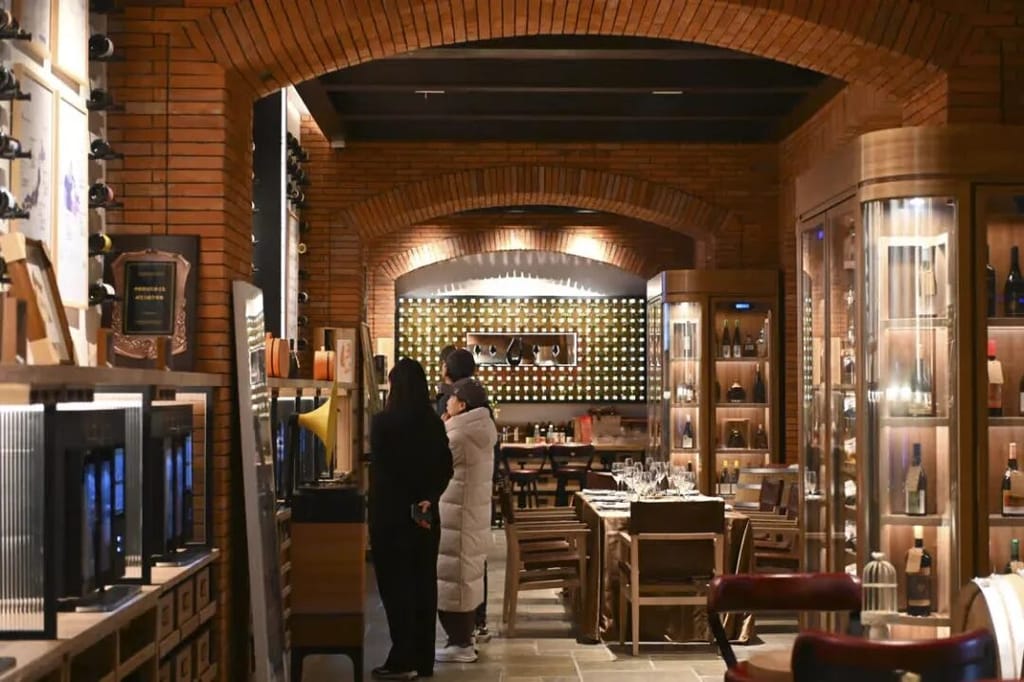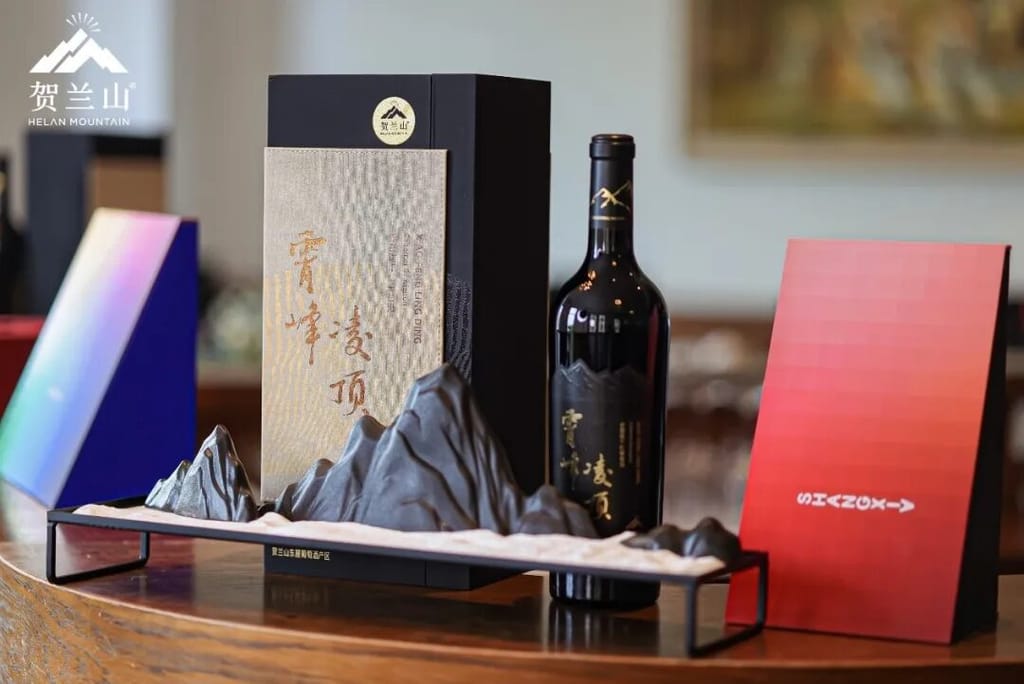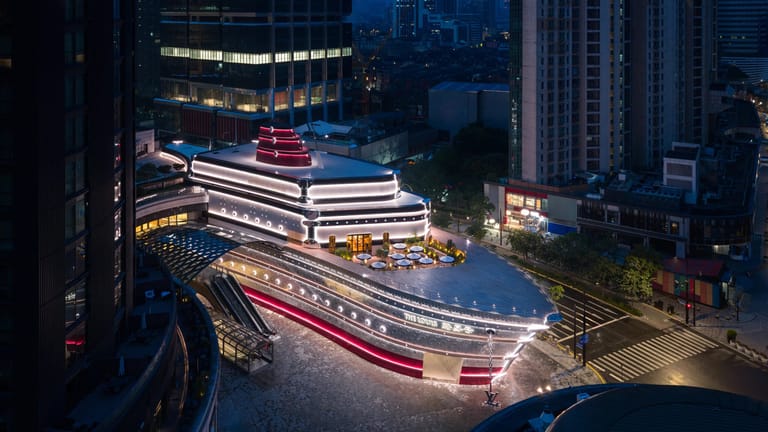China’s Emerging Wine Tourism Boom: How Ningxia Is Redefining Travel
By
Huiyan Chen

Published on
March 19, 2025

Jingzhi Vibe is a deep dive into the ever-evolving world of jingzhi(精致)—China’s unique expression of refinement, aesthetics, and cultural sophistication. This column unpacks the latest trends, movements, and lifestyle shifts shaping contemporary consumer desires, spanning luxury, fashion, design, wellness, and beyond. With a sharp local lens, Jingzhi Vibe deciphers how brands, creatives, and tastemakers are redefining modern Chinese elegance—and what it means for those looking to navigate this dynamic market.
With the rise of experiential travel, what was once considered an exclusive pursuit—vineyard tourism—is now becoming a mainstream phenomenon.
Surprisingly, a quick search for “vineyard tours” on RedNote (Xiaohongshu) reveals that the most frequently mentioned destination is not France, Italy, or Australia, but China’s remote Ningxia region.
Vineyard Tourism: A New Industry Gateway
From LVMH-owned Chandon China to boutique wineries like Xige and biodynamic pioneers such as Silver Heights, Ningxia’s Helan Mountain wine route is rapidly taking shape, offering a compelling alternative to more established global wine destinations.
Visitors to China’s top wine region can experience vineyard tours, explore grape cultivation and winemaking processes, and sample a variety of vintages for 200 to 600 RMB ($28–$84). According to Ningxia’s Department of Culture and Tourism, the region’s wineries now accept over 1.2 million visitors annually.

The surge in demand has even led to the emergence of travel agencies specializing in customized vineyard tours, tailoring itineraries based on seasonal changes. One of the earliest players in this space is Lujiu Travel, whose general manager, Zhu Jianping, told Jingzhi Chronicle: “After China reopened post-pandemic, interest in visiting Ningxia’s wineries soared, and inquiries flooded in. We are seeing continued growth in 2024.” On RedNote, topics related to “Ningxia winery tours” have already accumulated over 600,000 views.
Zhu further emphasized that a well-curated three-to-five-day vineyard tour deepens visitors’ understanding of Ningxia’s wine industry and enhances their appreciation of local wines. “After touring a winery, guests develop a strong connection with the region and its winemaking story. Most purchase their favorite wines before leaving and remain open to trying others from the area. If they have a great experience, they are more likely to share it with their networks—especially in today’s digital age, where people frequently post their travel experiences online. This type of organic exposure is invaluable for Ningxia’s wine industry.”
Ningxia’s booming vineyard tourism is catapulting the region’s wines into the consumer spotlight.
Ningxia: The Dark Horse of China’s Wine Industry
In the world of winemaking, terroir—the unique combination of soil, climate, and geography—defines everything. Ningxia’s vineyards are situated between 37 and 39 degrees latitude, the same belt as Bordeaux and Napa Valley.
“Ningxia has all the potential to become a world-class wine region,” said Du Yiwei, president of Austark Group and a guest lecturer at Shanghai Jiao Tong University’s Luxury Research Center.
Having established recognition domestically, Ningxia wines have the potential to grace cellars globally.
“The terroir of Helan Mountain’s eastern foothills is nothing short of exceptional,” said Du. “With a temperature variation of up to 15 degrees Celsius between day and night, sugar accumulation and acidity levels are perfectly balanced. The sandy soil ensures excellent drainage, minimizing disease risks, while deep-rooted vines extract rich nutrients. Additionally, Ningxia enjoys over 2,800 hours of annual sunshine—far exceeding Bordeaux—giving its wines both the vibrant fruitiness of New World wines and the layered complexity of Old World wines.”
The results speak for themselves. At the 2023 Concours Mondial de Bruxelles, Ningxia’s wines secured eight Grand Gold Medals and 80 Gold Medals—an unprecedented achievement for a Chinese wine region.
Beyond Terroir: The Cultural Business of Wine
While Ningxia’s technical winemaking prowess is impressive, its biggest hurdle remains low global brand recognition. “International consumers still have limited awareness of Chinese wines, and in some cases, lingering biases,” Du admitted.
“Chinese wine needs a stronger global narrative,” said Philippe Masset, Associate Professor at EHL Hospitality Business School.
Ningxia—a lesser-known region of China—must bolster its visibility on the world wine map. “Unlike other consumer goods, a wine’s brand equity is deeply tied to its region of origin,” Du explained. “A strong geographical identity is just as valuable as an individual winery’s brand reputation. If Ningxia can become a recognized name globally, all of its wineries will benefit.”
To achieve this, Ningxia must refine its appellation system and connect it to the region’s rich culture and history. “Whether by leveraging Helan Mountain’s deep historical roots or its connections to the Silk Road, telling the ‘Ningxia story’ will be central to its global strategy,” Du added.
Masset echoed this sentiment: “China’s rich culture and landscapes present enormous opportunities for wine storytelling. Few industries are better suited for this than wine.”

However, Du also cautioned against the pitfalls of over-internationalization. “Pursuing an ‘international palate’ at the expense of Ningxia’s unique terroir would be a mistake. The region’s growth should be defined by its distinctive Chinese Ningxia style rather than simply mimicking global trends.”
To gain international recognition, Ningxia wineries must also integrate into the global wine ecosystem. Beyond winning prestigious awards, Masset suggested that strategic partnerships with top restaurants could enhance credibility. “This is time-consuming and costly—something no single winery can accomplish alone. It requires coordinated efforts, but it is a highly effective way to gain visibility.”
Cracking the Domestic Market
But competition could put a cork in China’s bid to become a dominant and respectable wine contender at home and abroad. In March 2024, China’s Ministry of Commerce lifted anti-dumping and countervailing duties on Australian wines, paving the way for their return—a move that heightens the stakes for domestic playersand could hit margins. China’s wine industry must also contend with fierce competition from other alcoholic beverages, including a bourgeoning artisanal beer market. Failing to rise above the fray at home could hamper global ambitions.
Yet, headwinds aside, Ningxia’s winery boom suggests a potential breakthrough: young consumers.
According to Wine Business Observer, China’s younger generation has driven the country’s alcohol market to over 400 billion RMB ($55.5 billion), with wines under 10 percent ABV particularly popular. A report by Douyin’s parent company, ByteDance, also shows that light, easy-drinking, and slightly sweet wines are trending on social media, signaling a shift in consumer preferences toward more relaxed drinking experiences.
Furthermore, China’s growing bistro scene in top-tier cities presents a promising opportunity for local wines. These establishments cater to urban middle-class consumers already familiar with wine and willing to explore domestic brands. Capturing this market could be key to Ningxia’s future success.
Ningxia’s ascent is more than an industry evolution—it is a convergence of terroir, culture, and consumer trends. As globalization accelerates and young Chinese consumers redefine wine consumption, the region has the potential to quietly reshape the global wine landscape. But for now, Ningxia’s future hinges not only on engaging the world but on crafting a distinct identity within China itself.












